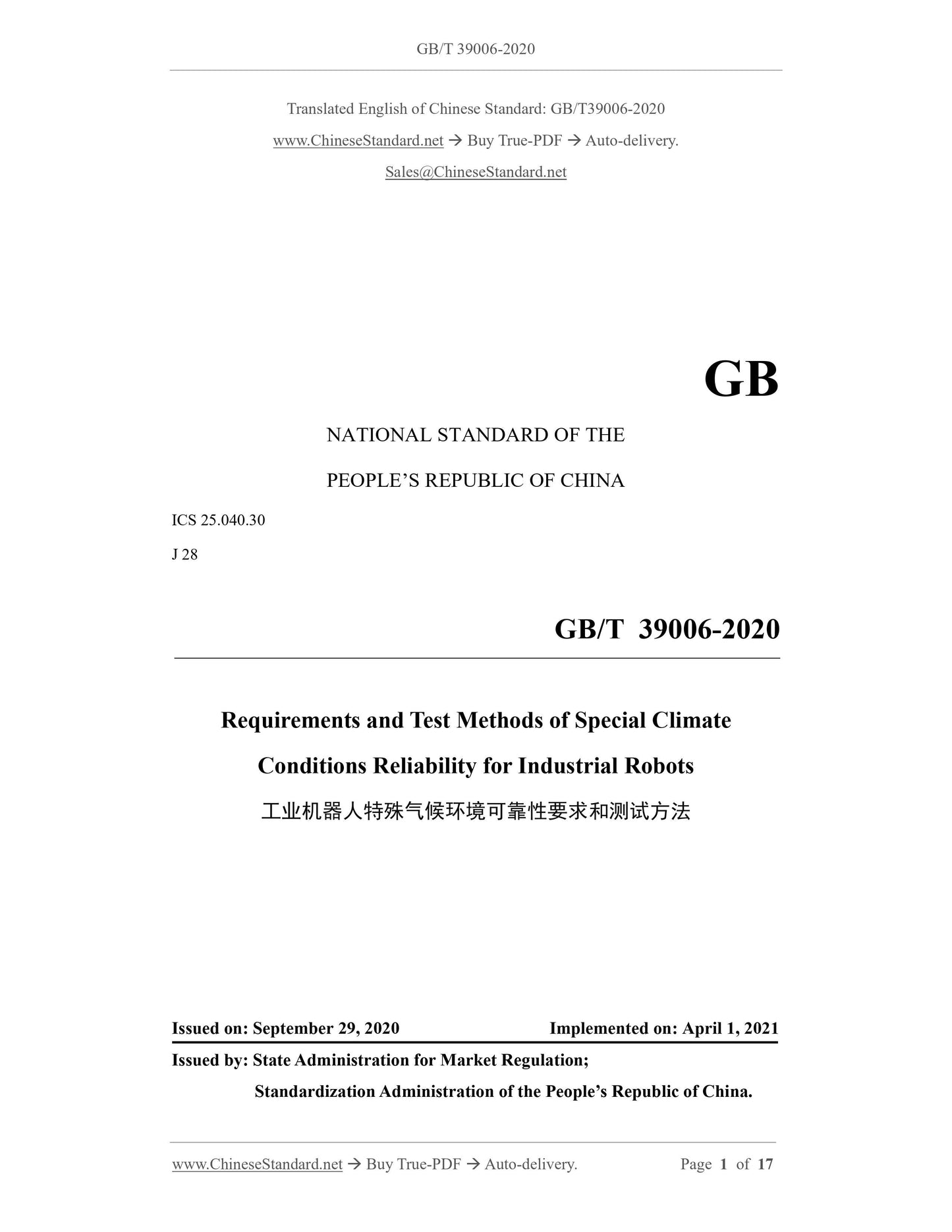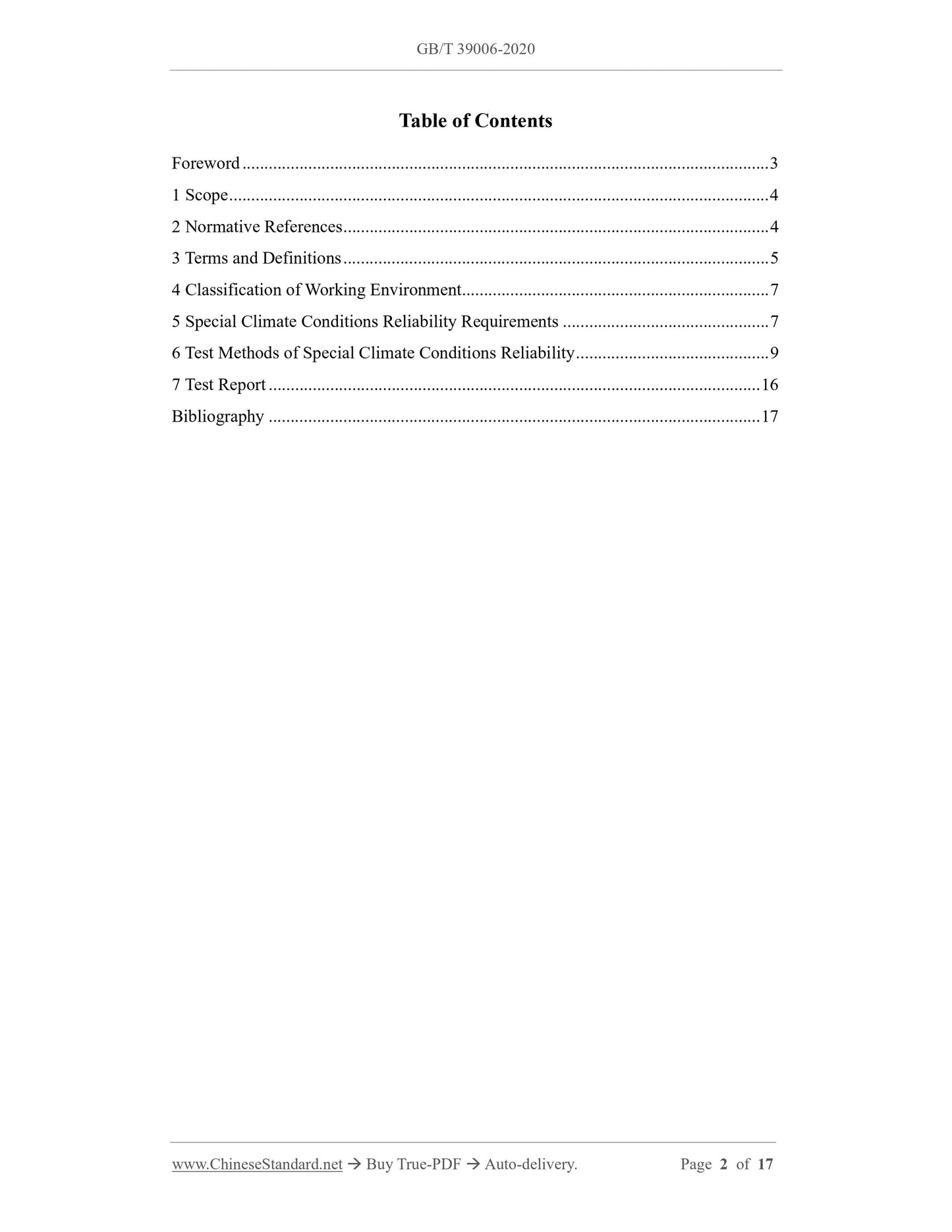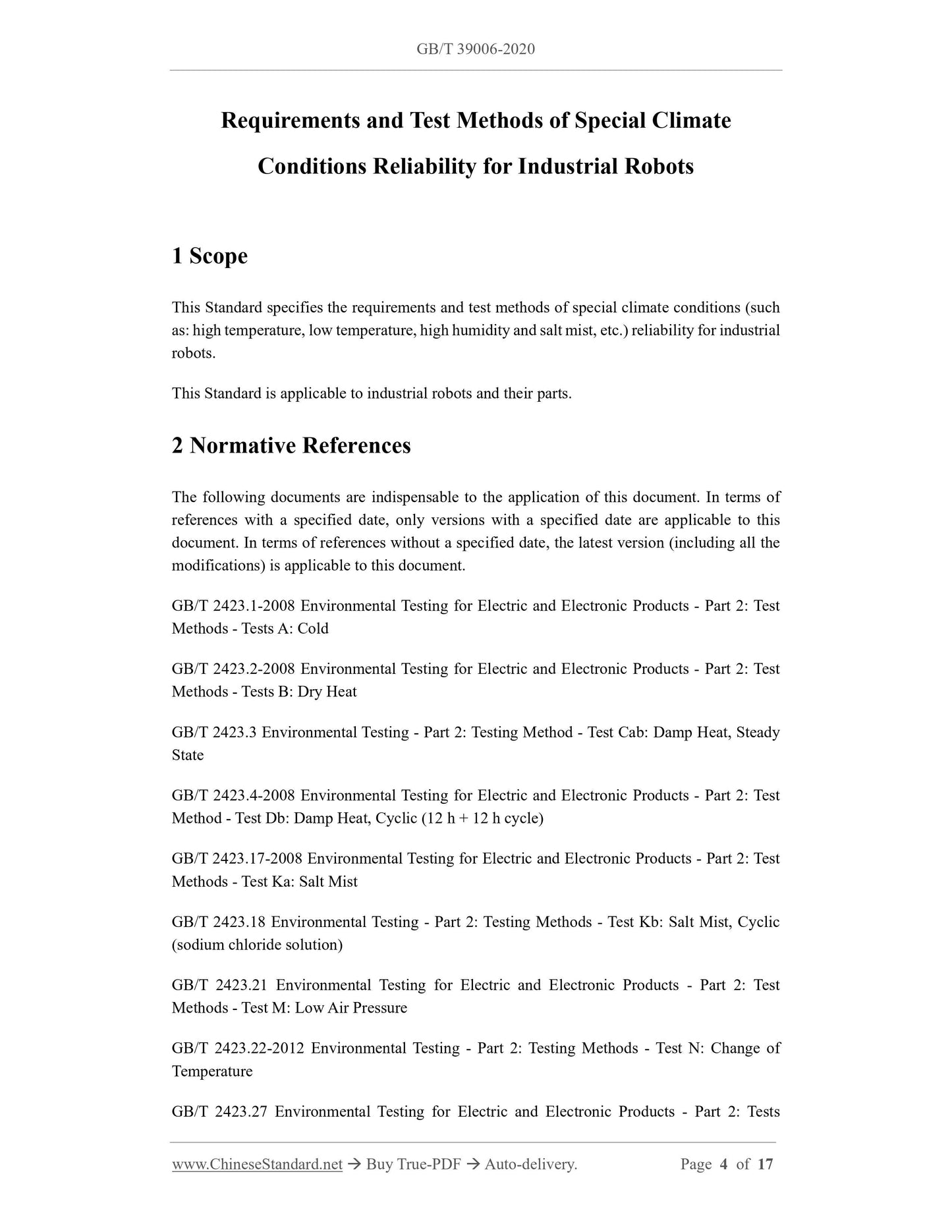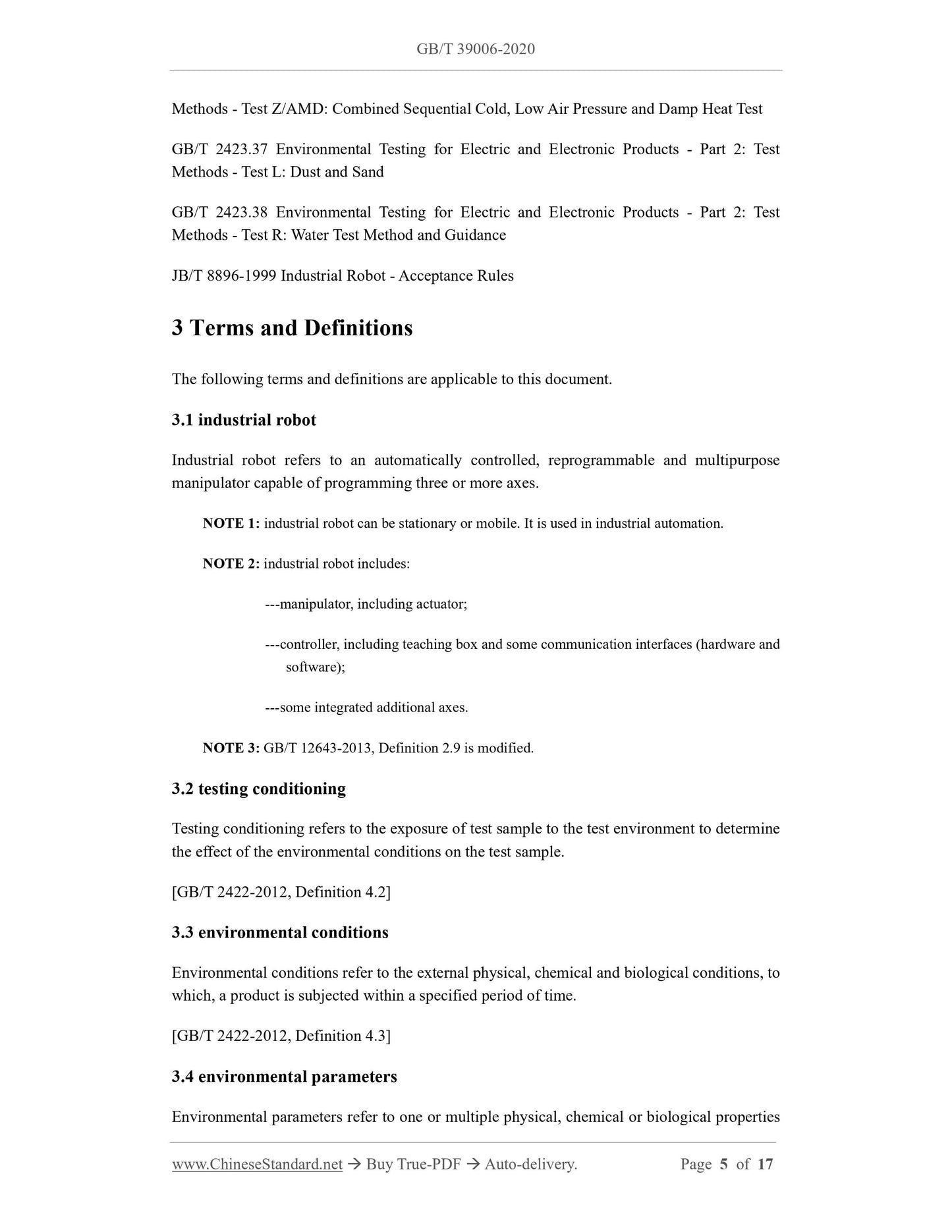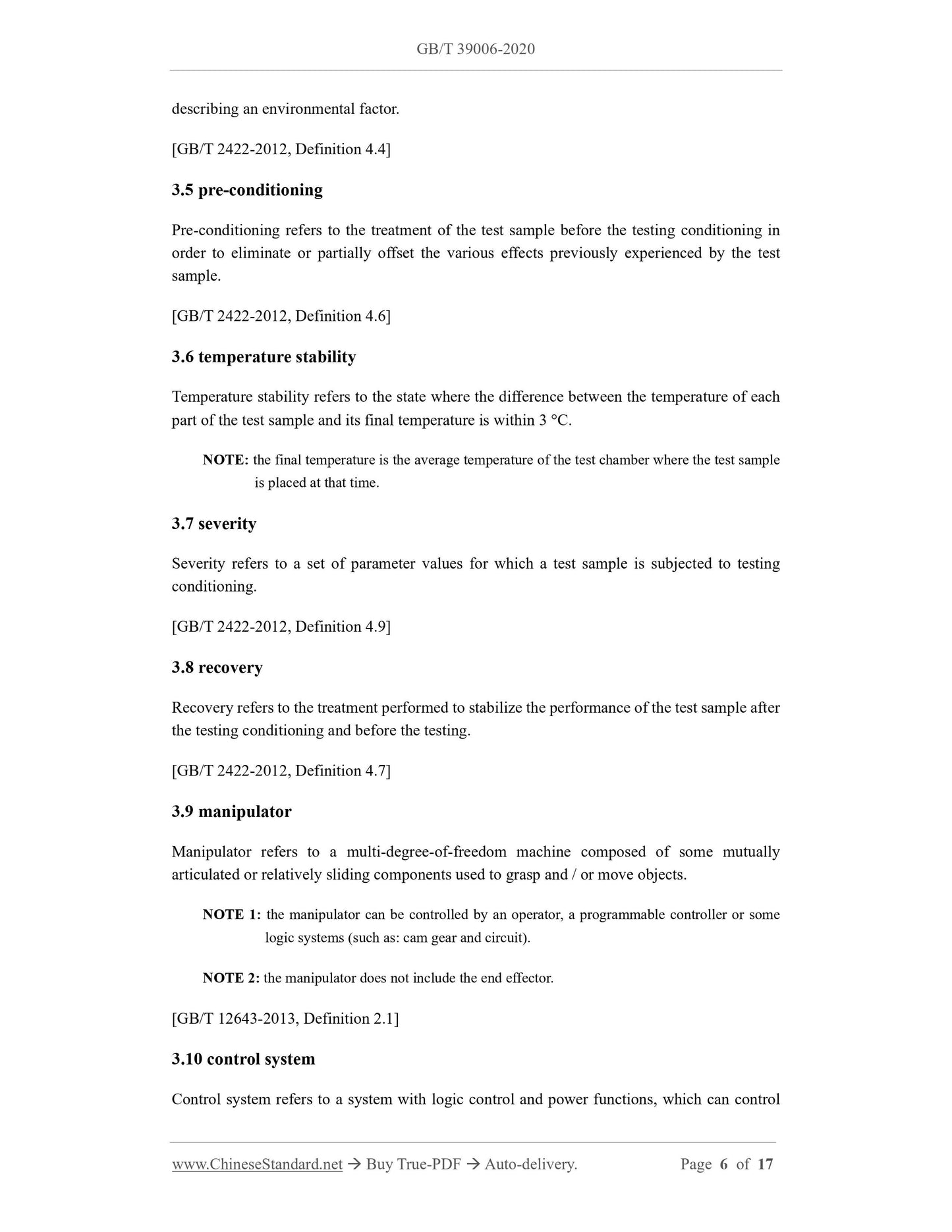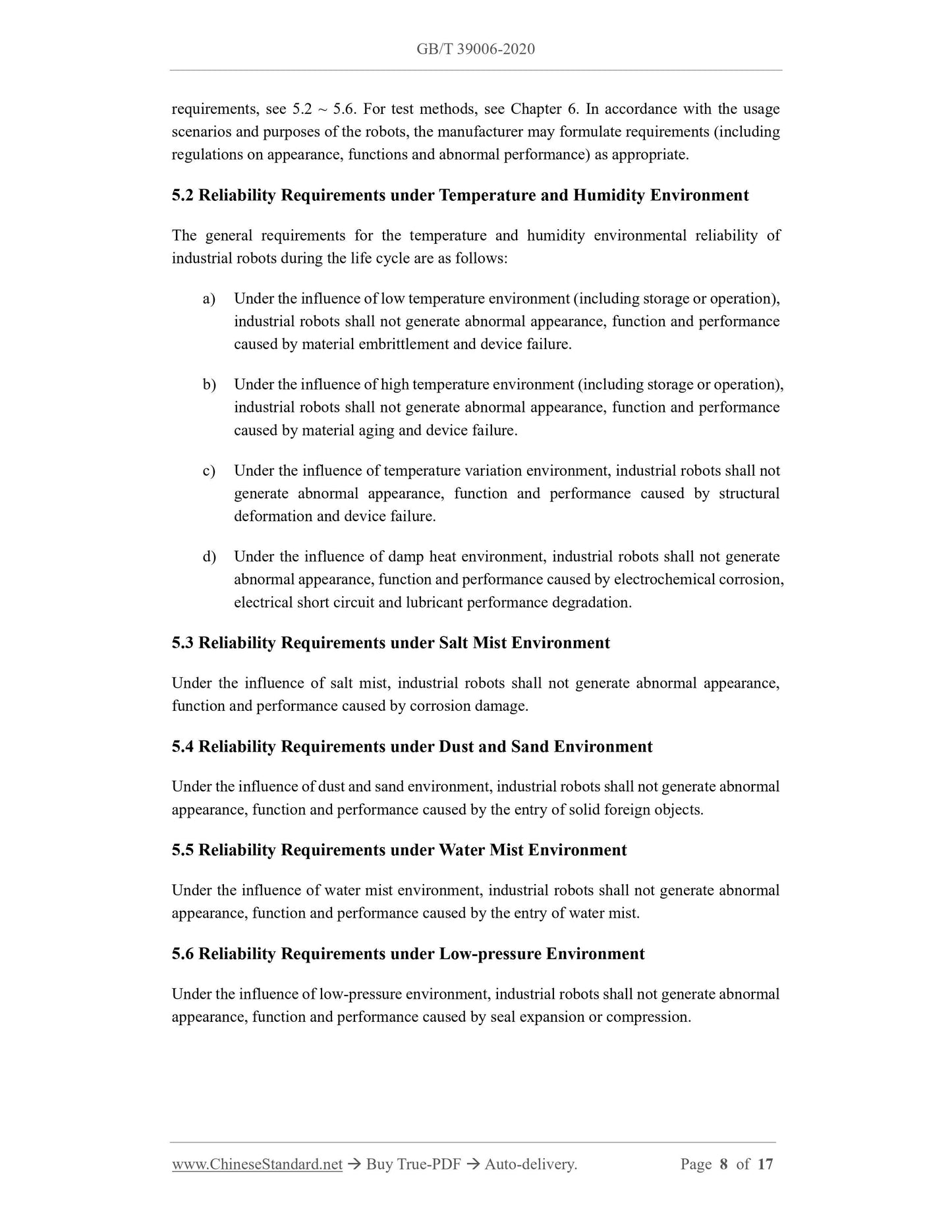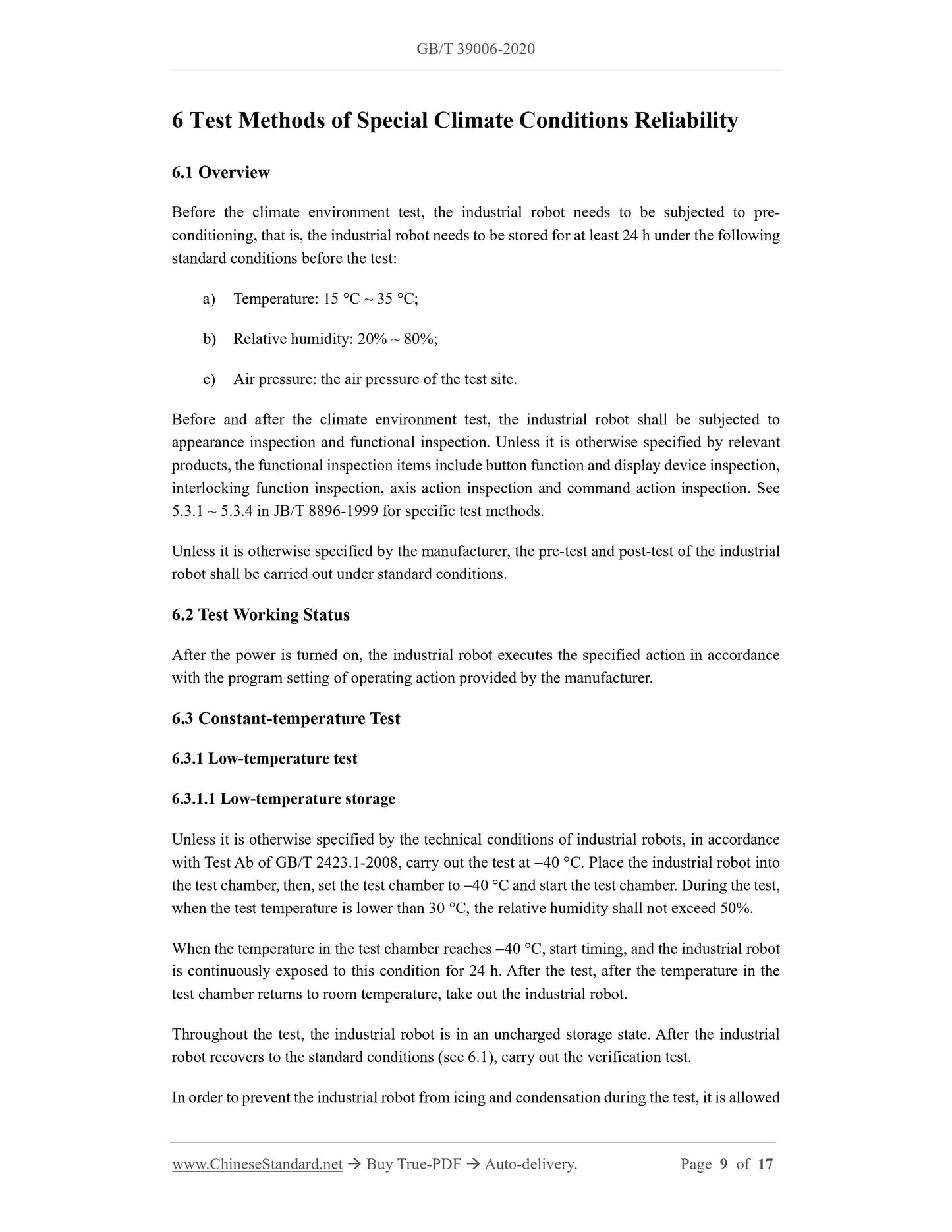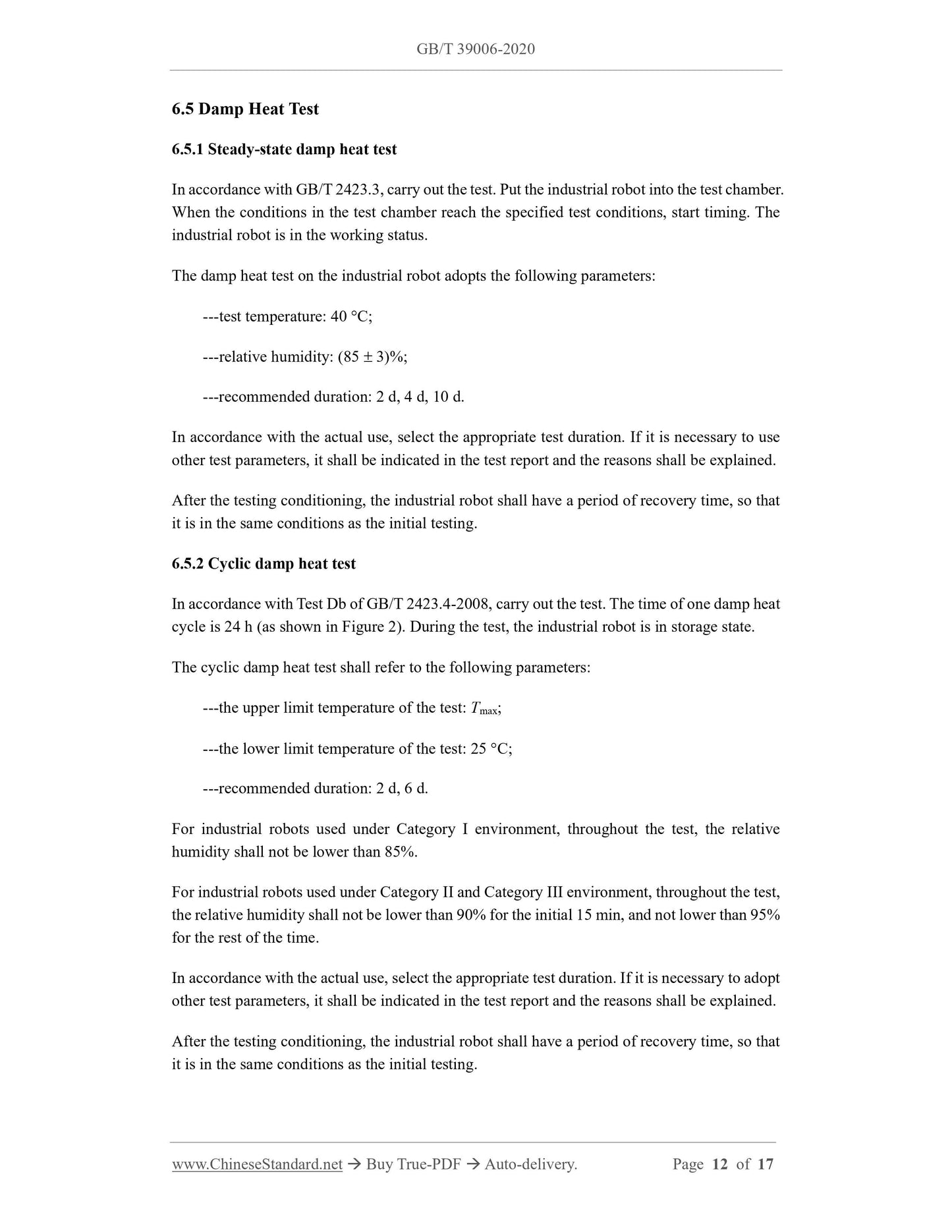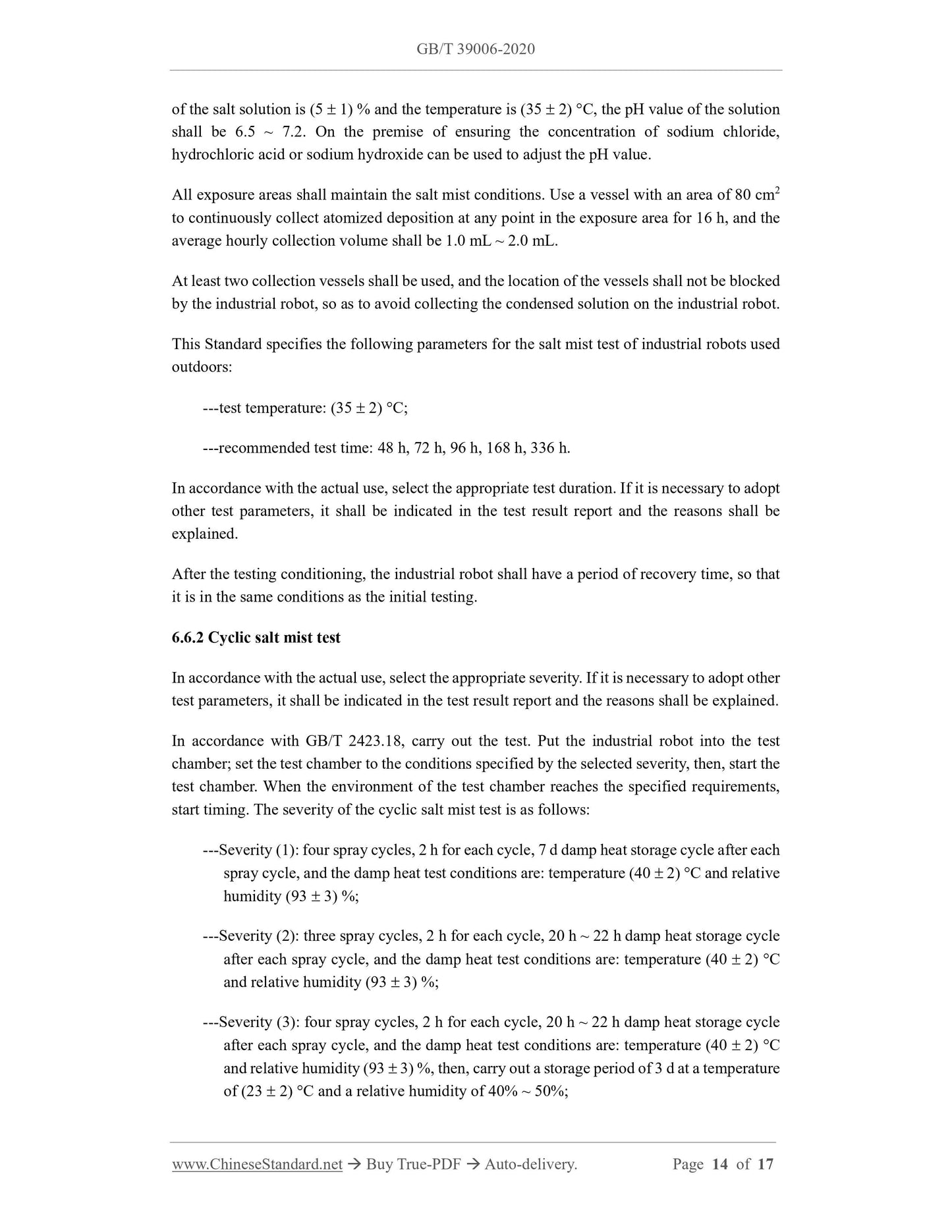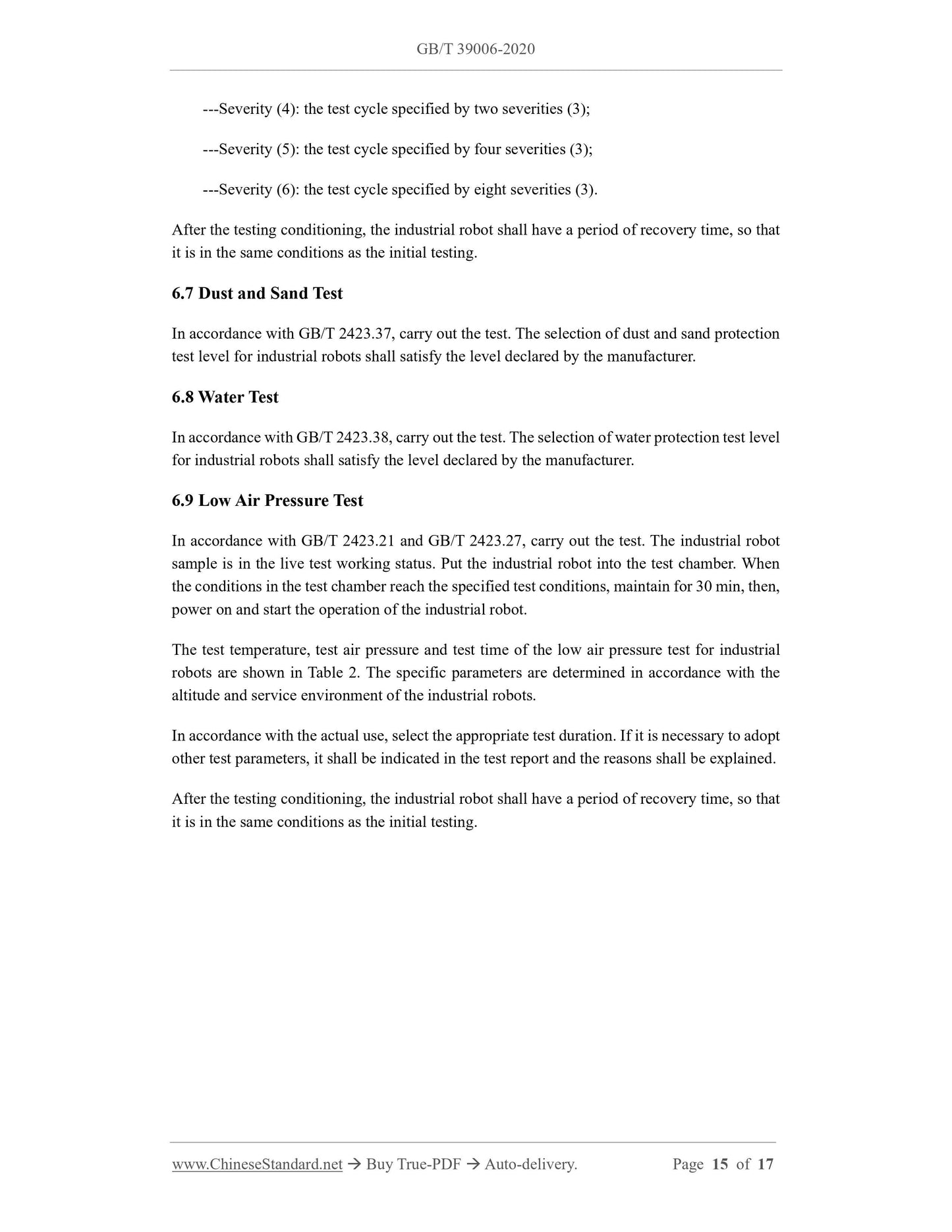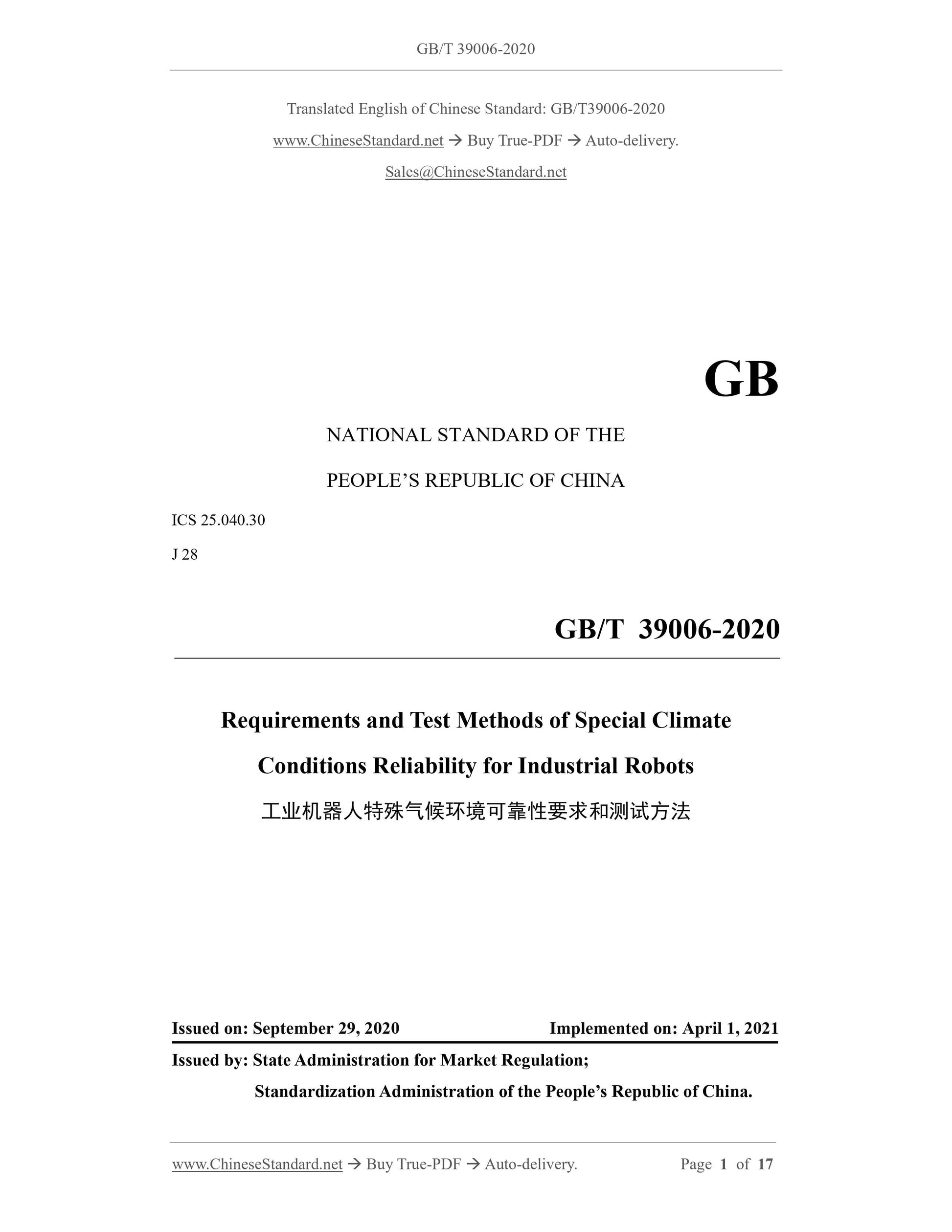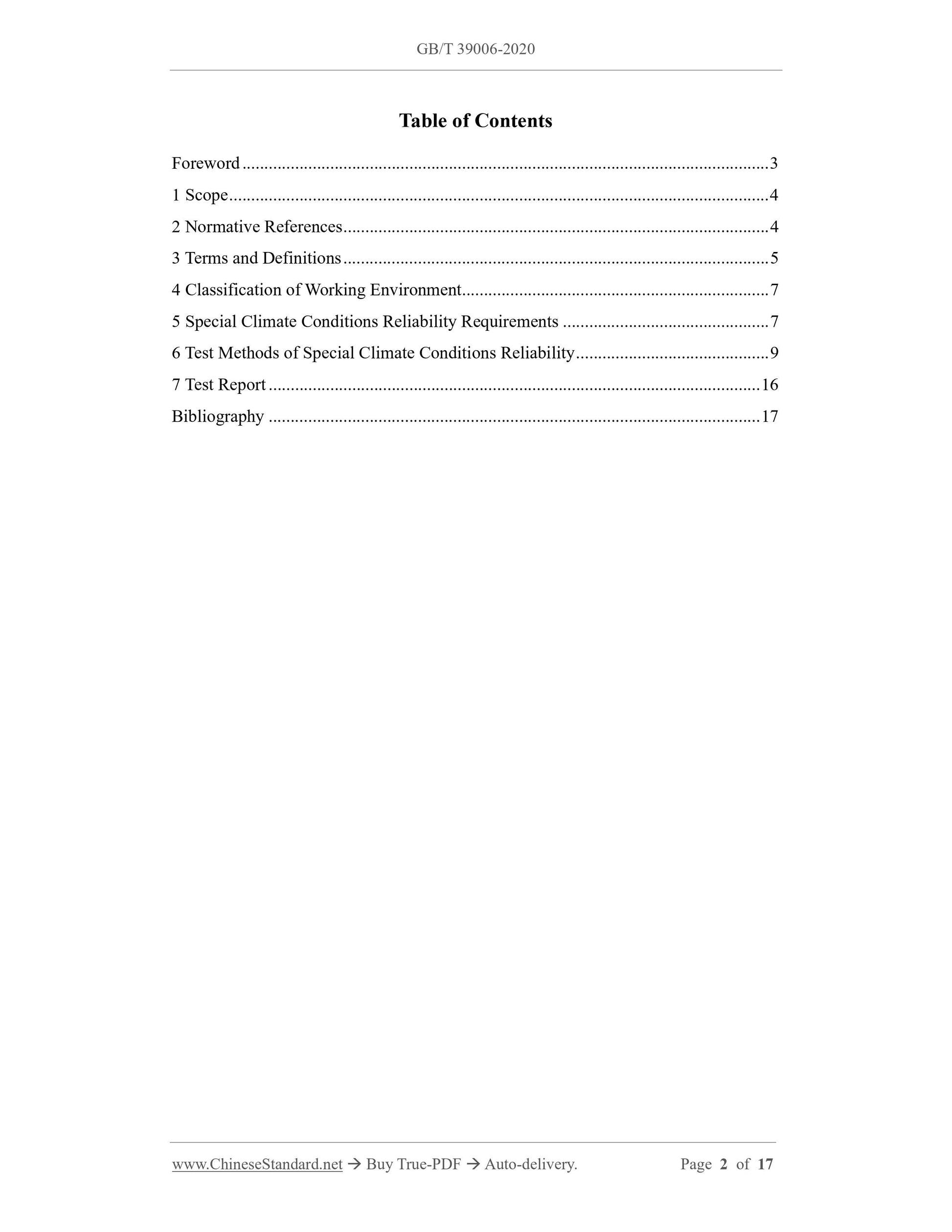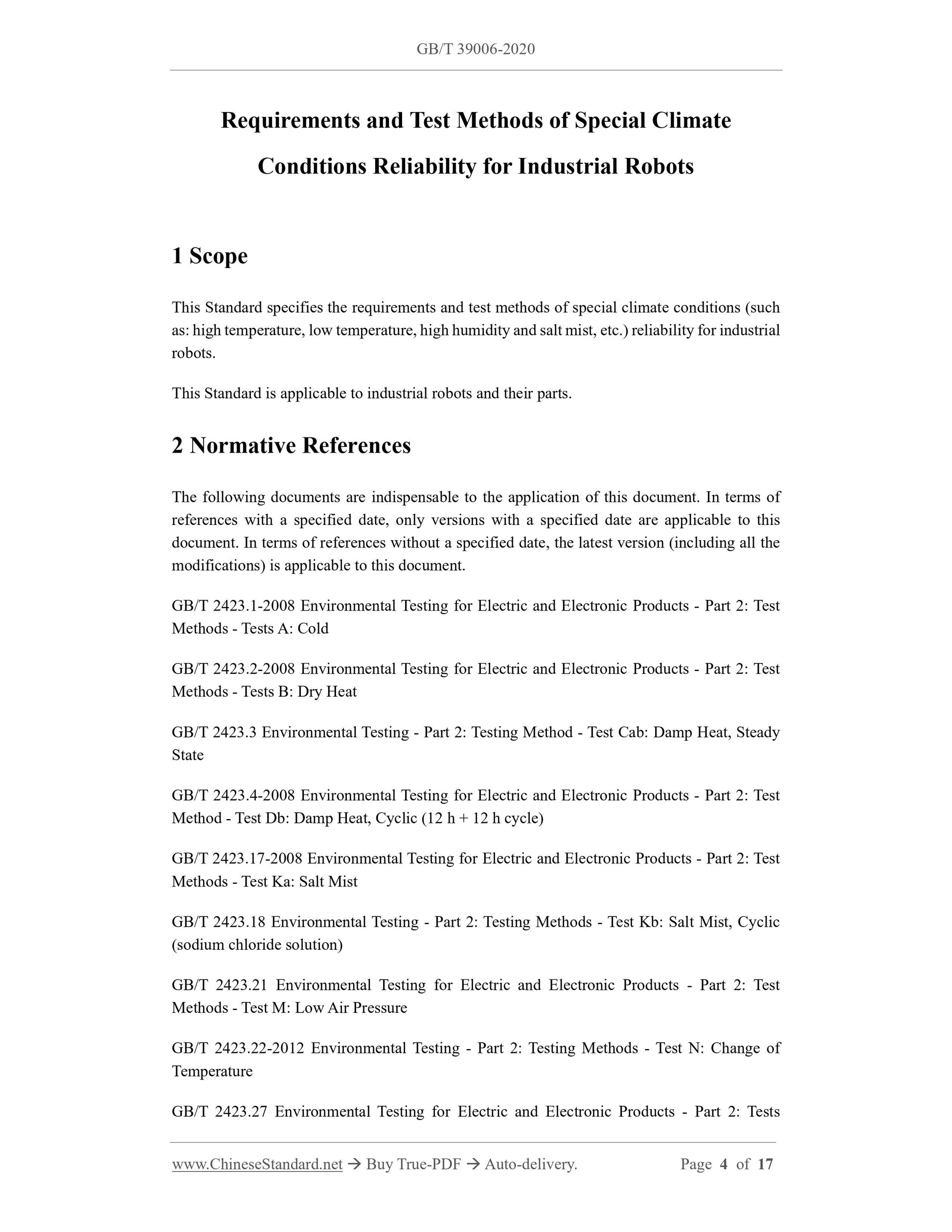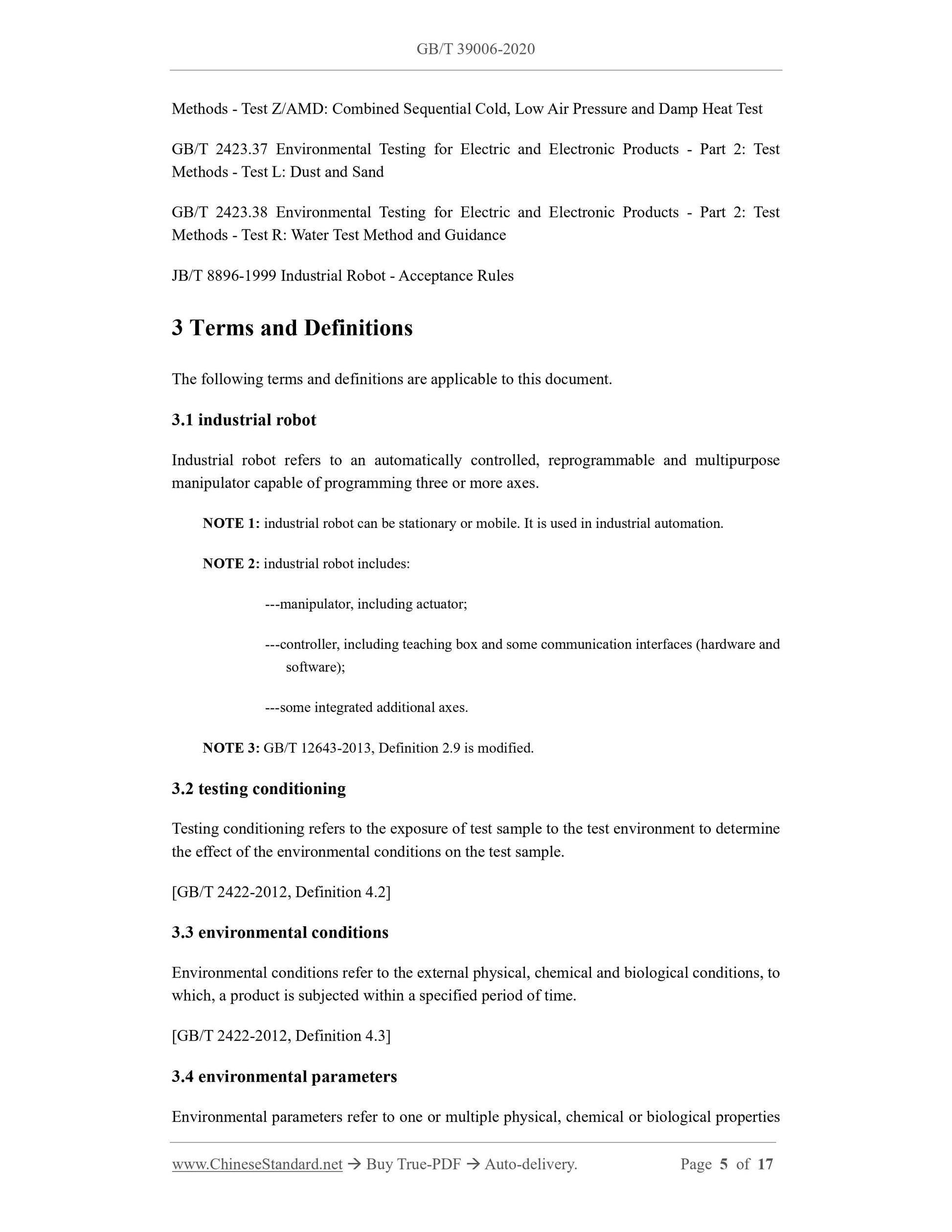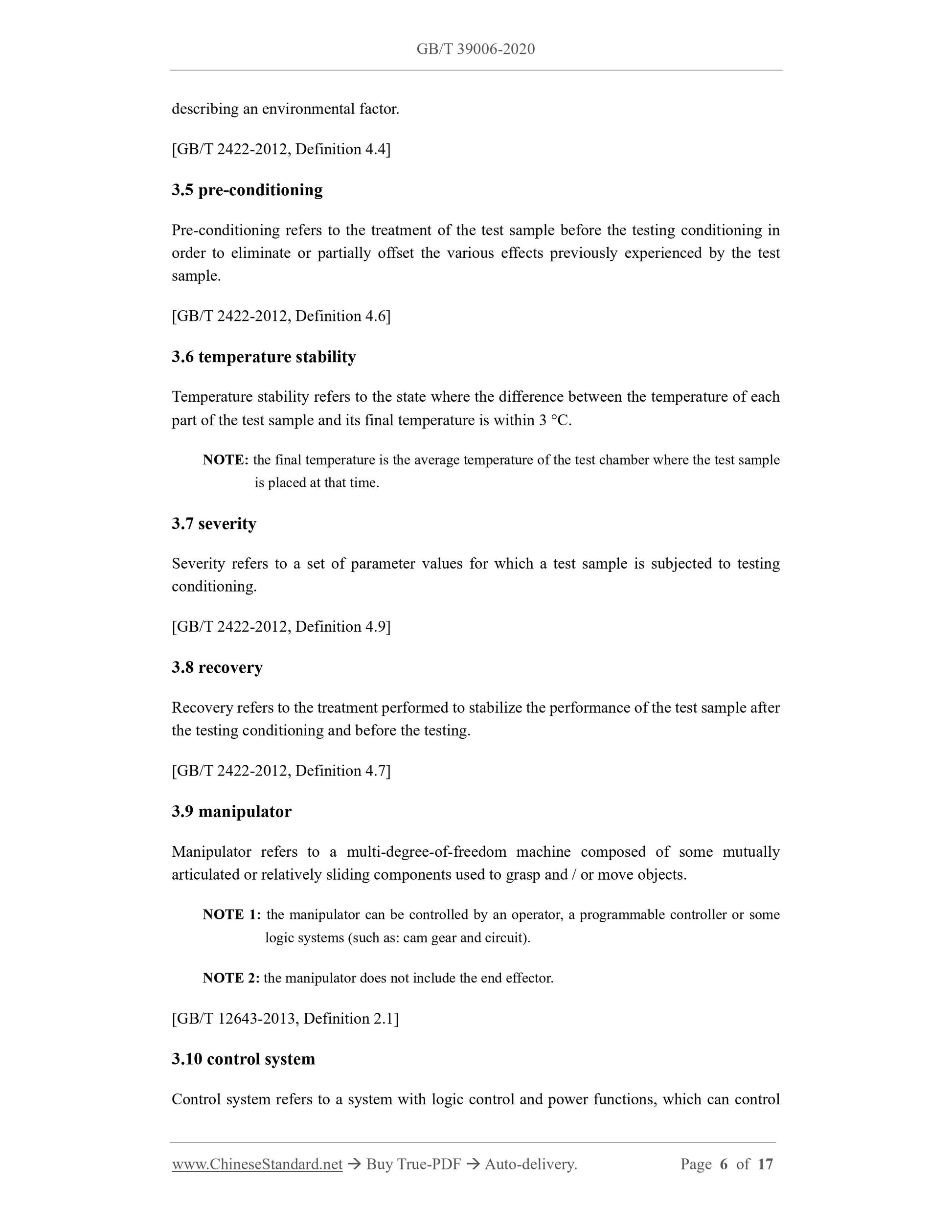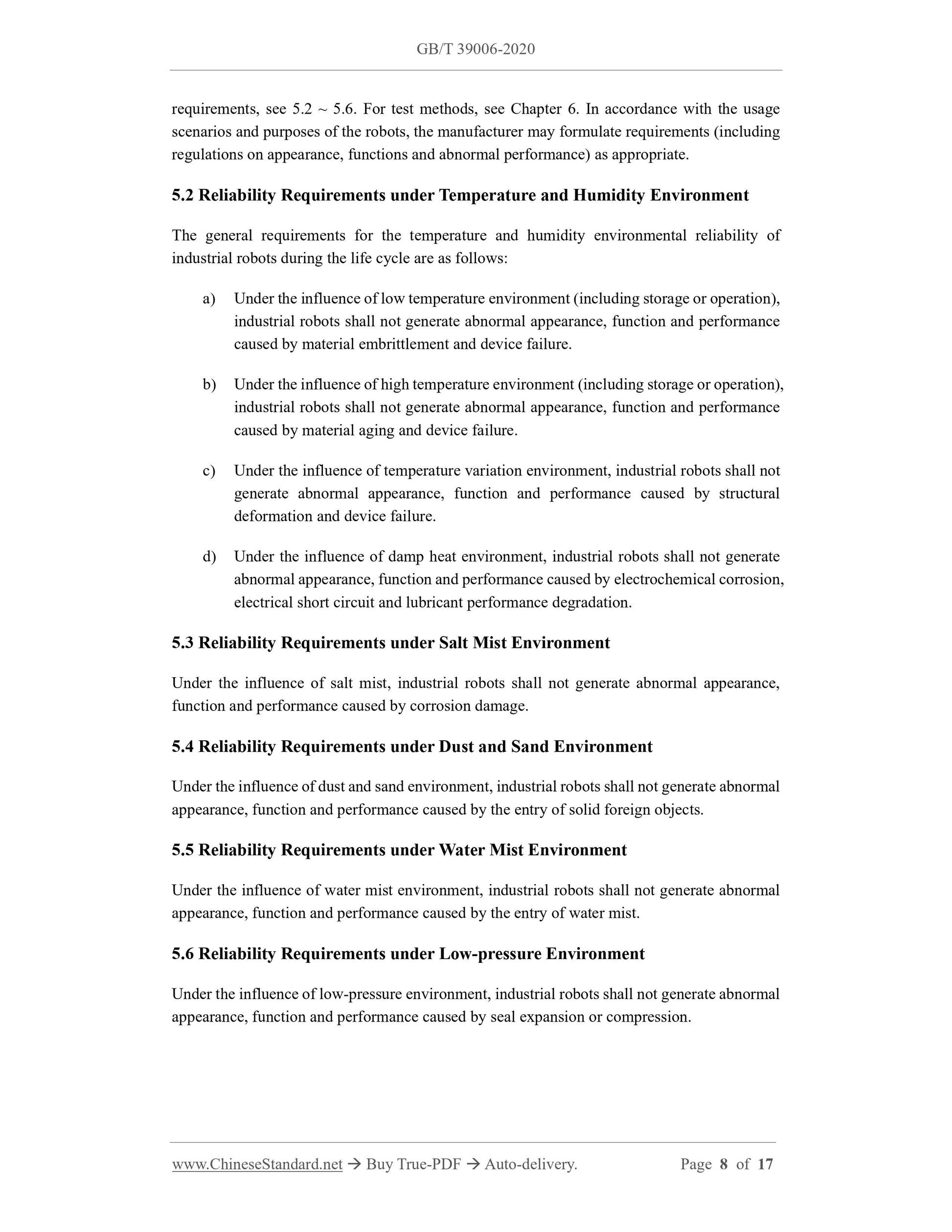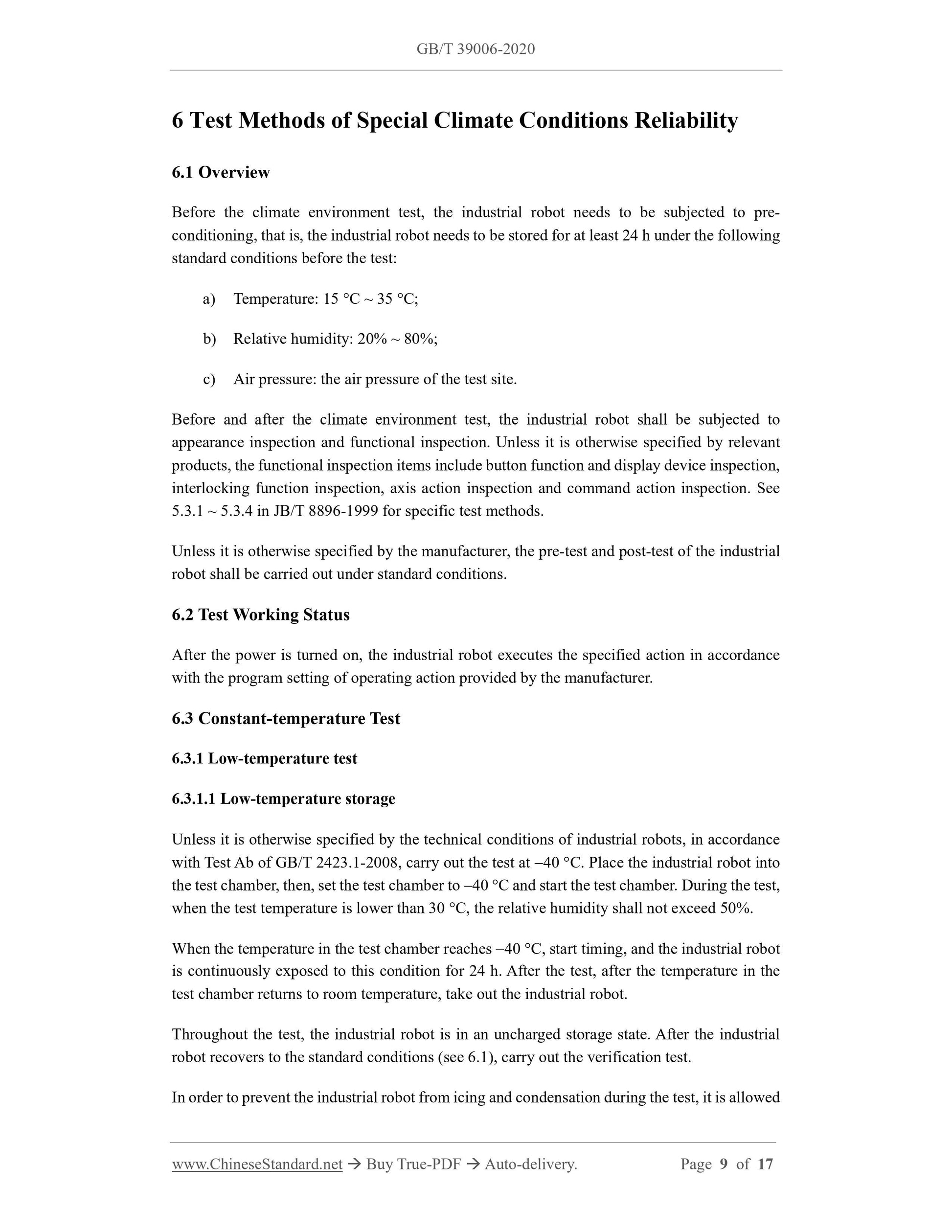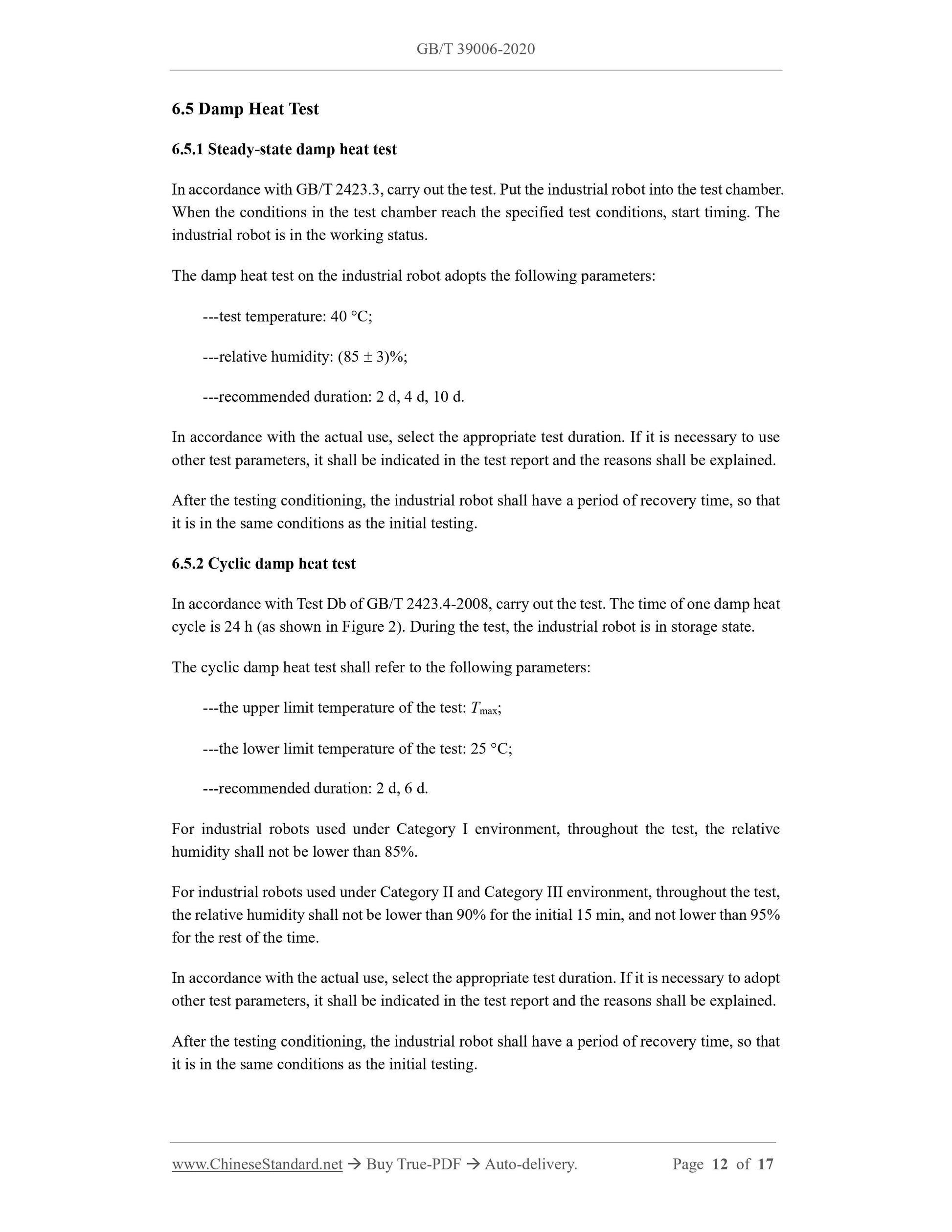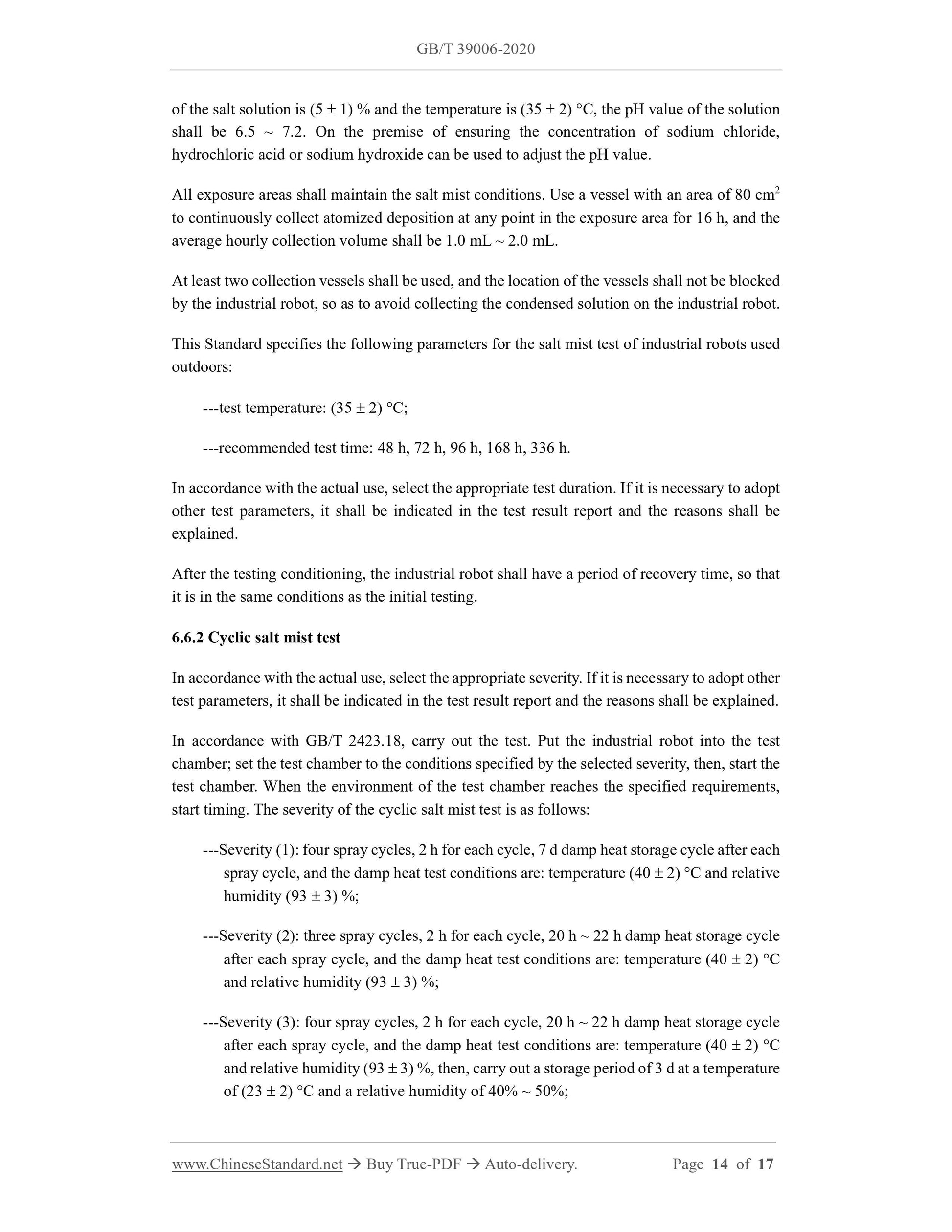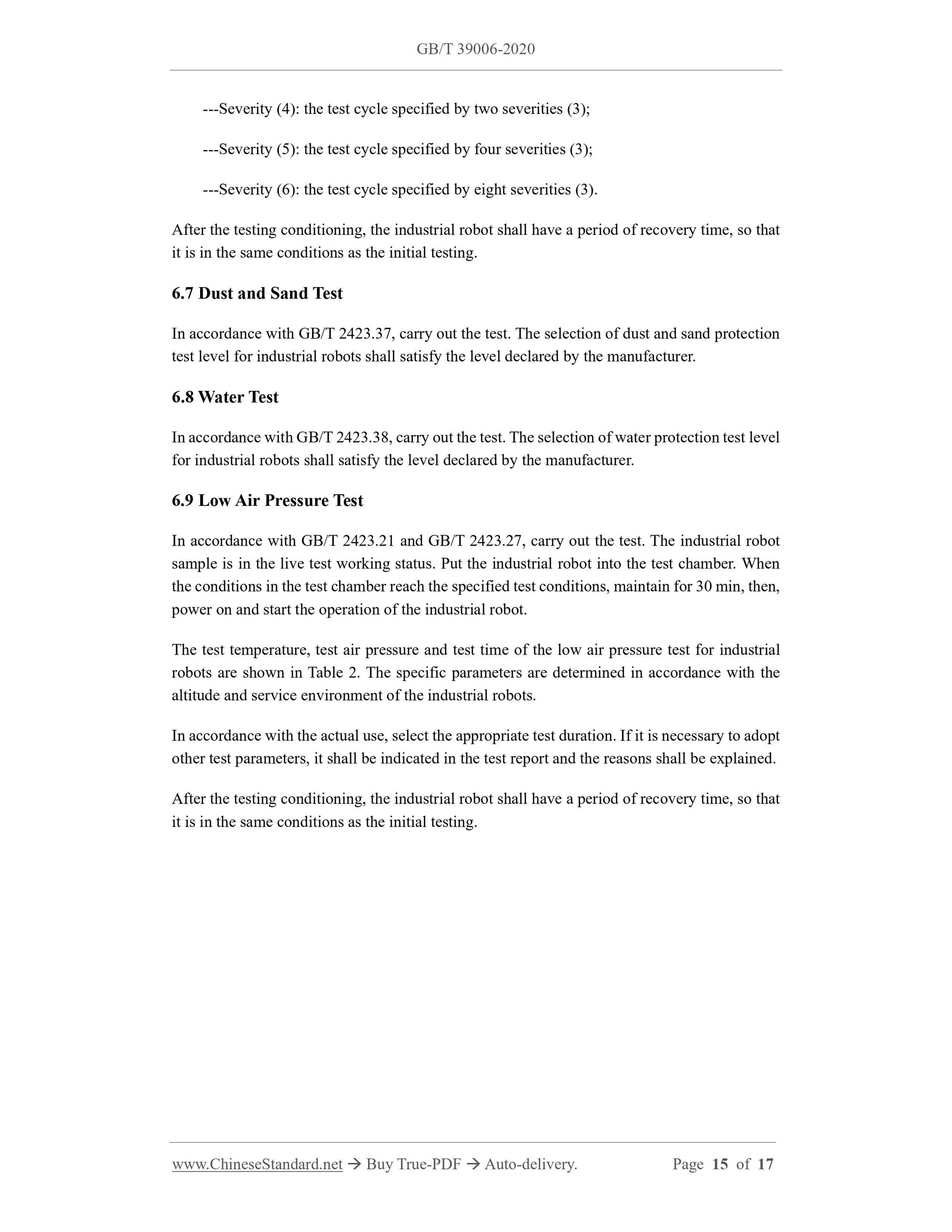1
/
of
10
www.ChineseStandard.us -- Field Test Asia Pte. Ltd.
GB/T 39006-2020 English PDF (GB/T39006-2020)
GB/T 39006-2020 English PDF (GB/T39006-2020)
Regular price
$205.00
Regular price
Sale price
$205.00
Unit price
/
per
Shipping calculated at checkout.
Couldn't load pickup availability
GB/T 39006-2020: Requirements and test methods of special climate conditions reliability for industrial robots
Delivery: 9 seconds. Download (and Email) true-PDF + Invoice.Get Quotation: Click GB/T 39006-2020 (Self-service in 1-minute)
Newer / historical versions: GB/T 39006-2020
Preview True-PDF
Scope
This Standard specifies the requirements and test methods of special climate conditions (suchas: high temperature, low temperature, high humidity and salt mist, etc.) reliability for industrial
robots.
This Standard is applicable to industrial robots and their parts.
Basic Data
| Standard ID | GB/T 39006-2020 (GB/T39006-2020) |
| Description (Translated English) | Requirements and test methods of special climate conditions reliability for industrial robots |
| Sector / Industry | National Standard (Recommended) |
| Classification of Chinese Standard | J28 |
| Classification of International Standard | 25.040.30 |
| Word Count Estimation | 12,119 |
| Date of Issue | 2020-09-29 |
| Date of Implementation | 2021-04-01 |
| Regulation (derived from) | National Standard Announcement No. 20 of 2020 |
| Issuing agency(ies) | State Administration for Market Regulation, China National Standardization Administration |
Share
